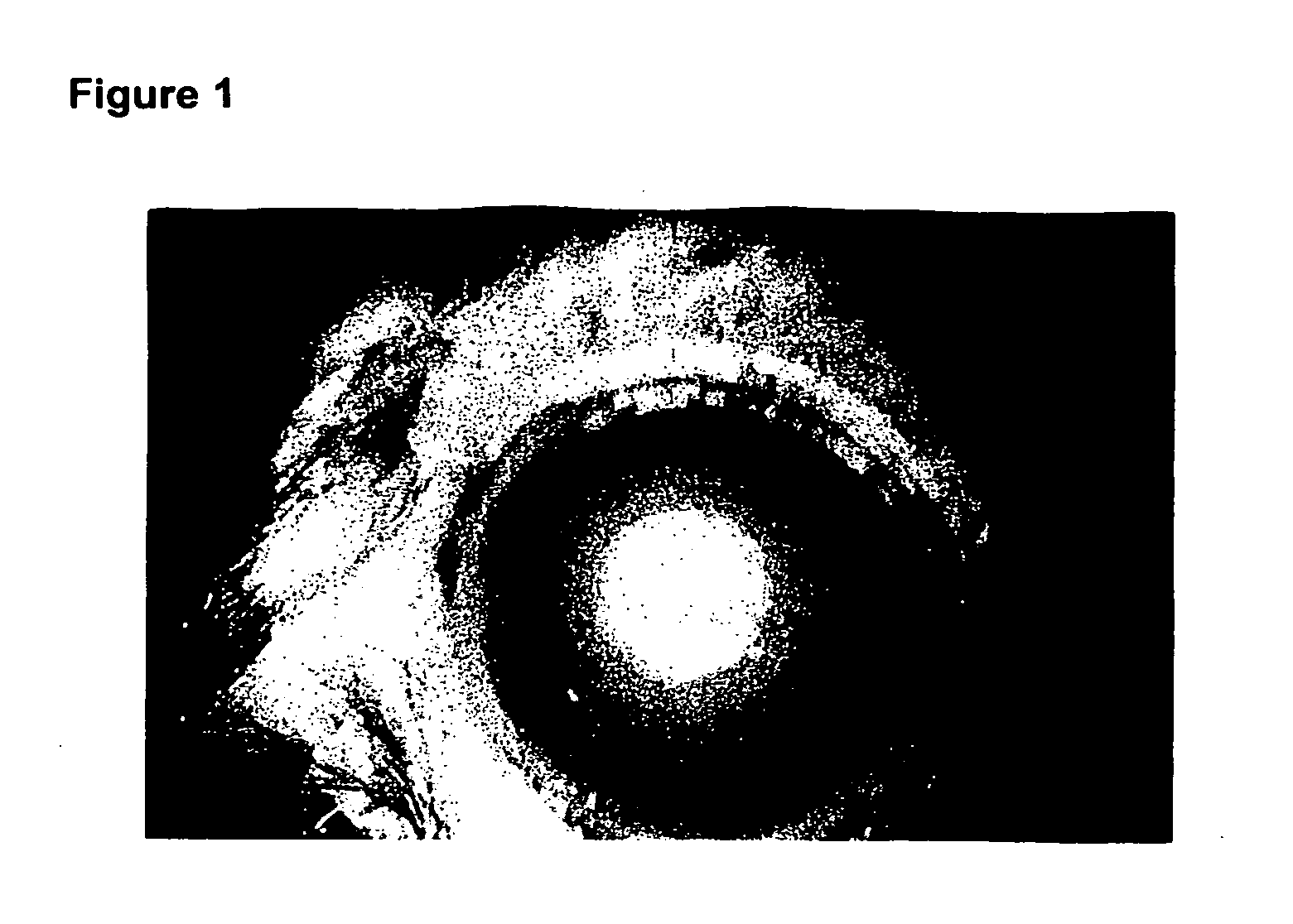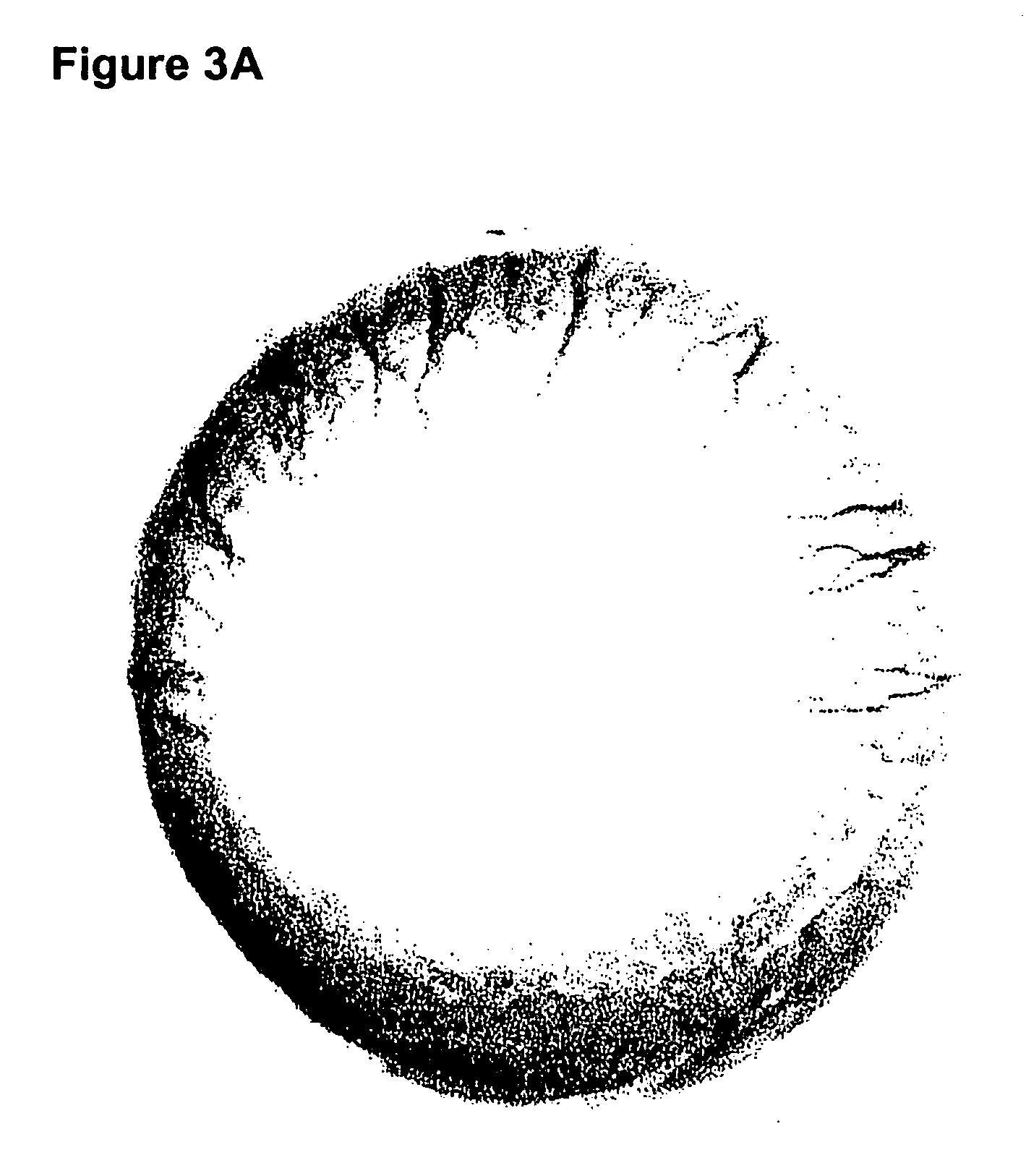Tetracycline derivatives for the treatment of ocular pathologies
a technology of ocular pathologies and derivatives, applied in the direction of biocide, cardiovascular disorders, drug compositions, etc., can solve the problems of ocular morbidity, ocular neovascularization, ocular neovascularization, etc., to reduce ocular neovascularization, reduce ocular neovascularization, and reduce ocular neovascularization.
- Summary
- Abstract
- Description
- Claims
- Application Information
AI Technical Summary
Benefits of technology
Problems solved by technology
Method used
Image
Examples
example 1
[0154] Artificial corneal burns were induced in rat eyes to determine the effects of doxycycline, steroids, and low molecular weight heparin, alone and in combinations, on corneal neovascularization. More specifically, topical administration of doxycycline, low molecular weight heparin, and triamcinolone were administered twice a day to rats in which corneal burns had been artificially induced by application of silver nitrate (70%) and potassium nitrate (30%).
[0155] The presence of new vessels (neovascularization) and the extent of new vessel formation was assessed by split lamp photography and histology. Inhibition of vessel proliferation was evaluated by measuring vessel progression from the outer cornea (corneal limbus) into the cornea. A numerical rating system was used to quantitate the degree of inhibition (+, ++, and +++ inhibition), with “+ inhibition” indicating inhibition one-third of the distance from the limbus of the cornea to the center; “++ inhibition” indicating inh...
example 2
[0160] The ability of the inventive formulation to cause regression of existing vessels was demonstrated. Neovascularization was induced over three days by topical application of a silver nitrate solution, as described in Example 1, to thirty-two rat eyes. Vascularization was allowed to proceed midway from the limbus to the cornea (days 1, 2, and 3).
[0161] On day 4, one dose (15 pl) of one of the following treatments was administered to the affected eyes (eight eyes per group): saline (control); a formulation of triamcinolone (40 mg / ml) and low molecular weight heparin (10 mg / ml); a formulation of doxycycline (20 mglml) and low molecular weight heparin (10 mg / ml); or a formulation of doxycycline (20 mg / ml) and triamcinolone (40 mg / ml). The same treatment regimen was repeated on each eye on both of days 5 and 6.
[0162] Eyes were examined on day 6. All of the control eyes showed vascular progression, in that the eyes were fully vascularized and no inhibition of vascularization occurr...
example 3
[0164] Artificial corneal burns were induced in thirty-two eyes belonging to thirty-two Long Evans rats to determine the effects of doxycycline or another tetracycline derivative and low molecular weight heparin, doxycycline or another tetracycline derivative, and flurbiprofen, or flurbiprofen and low molecular weight heparin, on corneal neovascularization. All the eyes were examined to exclude any eyes with corneal scars and / or neovascularization prior to induction. More specifically, topical administration of the described two drug combination was administered twice a day to rats in which corneal burns had been artificially induced by application of silver nitrate (70%) and potassium nitrate (30%).
[0165] Neovascularization was induced in all eyes using silver nitrate cauterization. The animals were first anesthetized by intraperitoneal injection of a mixture of ketamine hydrochloride (25 mg / kg) with xylazine hydrochloride (5 mg / kg). The cornea was then anesthetized by a drop of 0...
PUM
| Property | Measurement | Unit |
|---|---|---|
| Time | aaaaa | aaaaa |
| Mass | aaaaa | aaaaa |
| Concentration | aaaaa | aaaaa |
Abstract
Description
Claims
Application Information
 Login to View More
Login to View More - R&D
- Intellectual Property
- Life Sciences
- Materials
- Tech Scout
- Unparalleled Data Quality
- Higher Quality Content
- 60% Fewer Hallucinations
Browse by: Latest US Patents, China's latest patents, Technical Efficacy Thesaurus, Application Domain, Technology Topic, Popular Technical Reports.
© 2025 PatSnap. All rights reserved.Legal|Privacy policy|Modern Slavery Act Transparency Statement|Sitemap|About US| Contact US: help@patsnap.com



